Pandas Convert Column To String
Methods to Convert a Pandas Column to a String:
1. Method 1: Using the astype() function
The astype() function in pandas is a convenient way to change the data type of a column. To convert a column to a string using this method, we can simply use the astype() function with the argument ‘str’. Here’s an example:
“`python
df[‘column_name’] = df[‘column_name’].astype(str)
“`
2. Method 2: Applying the str() function
Another approach is to apply the built-in str() function to the column we want to convert. This function converts each element of the column to a string. Here’s how we can use this method:
“`python
df[‘column_name’] = df[‘column_name’].apply(str)
“`
3. Method 3: Utilizing the apply() function with lambda
The apply() function in pandas allows us to apply a function to each element of a column. We can use lambda functions to convert each element to a string. Here’s an example:
“`python
df[‘column_name’] = df[‘column_name’].apply(lambda x: str(x))
“`
4. Method 4: Converting using the map() function
The map() function can be used to convert elements of a column to strings. We can define a mapping function that converts each element to a string and then apply the map() function to the column. Here’s an example:
“`python
df[‘column_name’] = df[‘column_name’].map(lambda x: str(x))
“`
5. Method 5: Using the to_string() function
The to_string() function in pandas converts a DataFrame or Series to a string representation. We can utilize this function to convert a specific column to a string format. Here’s how we can use this method:
“`python
df[‘column_name’] = df[‘column_name’].to_string()
“`
6. Method 6: Transforming with the Series.astype() method
Similar to Method 1, we can use the Series.astype() method to convert a column to a string. This method works directly on the column without modifying the original DataFrame. Here’s an example:
“`python
df[‘column_name’] = df[‘column_name’].astype(str)
“`
7. Method 7: Handling NaN values during conversion
When dealing with missing or NaN values in a column, it is important to handle them appropriately during the conversion process. We can use the fillna() function in pandas to replace NaN values with a specified string value before applying any of the above methods. Here’s an example:
“`python
df[‘column_name’] = df[‘column_name’].fillna(‘NA’).astype(str)
“`
8. Method 8: Dealing with formatting options and custom conversions
Sometimes, we may need to apply specific formatting options or custom conversions while converting a column to a string. We can use the apply() function with a custom conversion function to achieve this. Here’s an example:
“`python
def custom_conversion(x):
# Custom logic for conversion
return str(x)
df[‘column_name’] = df[‘column_name’].apply(custom_conversion)
“`
FAQs:
Q1: How to replace a specific string in a pandas column?
To replace a specific string in a pandas column, we can use the `replace()` function. Here’s an example:
“`python
df[‘column_name’] = df[‘column_name’].replace(‘old_string’, ‘new_string’)
“`
Q2: How to convert an object to a string in pandas?
By default, pandas automatically converts object-type columns to strings. However, if your column is not being converted automatically, you can use any of the methods mentioned above.
Q3: How to convert a pandas value to a string?
To convert a single value to a string in pandas, you can simply use the `str()` function, like `str(value)`.
Q4: How to change the data type of a column in pandas?
To change the data type of a column in pandas, you can use the `astype()` function or any of the other methods discussed above. For example:
“`python
df[‘column_name’] = df[‘column_name’].astype(new_data_type)
“`
Q5: What if pandas cannot convert an object to a string?
If pandas cannot convert an object to a string, it might be due to incompatible data types or missing values. Make sure to handle these cases appropriately, using methods such as fillna(), replace(), or custom conversion functions.
Q6: How to convert a DataFrame to a string in pandas?
To convert a DataFrame to a string representation, you can use the `to_string()` function. Here’s an example:
“`python
df_string = df.to_string()
“`
Q7: How to convert a pandas column to a list?
To convert a column in pandas to a list, you can simply use the `.tolist()` function. Here’s an example:
“`python
column_list = df[‘column_name’].tolist()
“`
In conclusion, converting a pandas column to a string format is essential for various data processing tasks. In this article, we explored multiple methods to achieve this, including the use of `astype()`, `to_string()`, `apply()`, `map()`, and custom conversion functions. We also discussed how to handle NaN values during conversion and addressed some common FAQs related to this topic.
Convert Columns To String In Pandas
How To Convert A Column To String In Pandas?
Pandas is a popular library for data manipulation and analysis in Python. It offers powerful tools for working with structured data, such as tables and spreadsheets. One common task in data analysis is converting a column to a string, which can be useful for various reasons, such as applying string operations or exporting data to certain file formats. In this article, we will explore different methods to convert a column to a string in Pandas, providing step-by-step explanations and examples.
Method 1: Using the astype() function
The astype() function in Pandas is a versatile tool for converting data types. To convert a column to a string, you can pass the ‘str’ argument to astype(). Let’s look at an example:
“`python
import pandas as pd
data = {‘Name’: [‘John’, ‘Jane’, ‘Mike’],
‘Age’: [25, 30, 35]}
df = pd.DataFrame(data)
df[‘Age’] = df[‘Age’].astype(str)
print(df[‘Age’])
“`
Output:
“`
0 25
1 30
2 35
Name: Age, dtype: object
“`
In this example, we create a DataFrame with a ‘Name’ column containing strings and an ‘Age’ column containing integers. By using the astype() function, we convert the ‘Age’ column to strings. The output shows that the ‘Age’ column has been converted successfully.
Method 2: Applying the str() function
Another method to convert a column to a string in Pandas is by applying the str() function to the column. Below is an example:
“`python
import pandas as pd
data = {‘Name’: [‘John’, ‘Jane’, ‘Mike’],
‘Age’: [25, 30, 35]}
df = pd.DataFrame(data)
df[‘Age’] = df[‘Age’].apply(str)
print(df[‘Age’])
“`
Output:
“`
0 25
1 30
2 35
Name: Age, dtype: object
“`
Similar to the previous example, the ‘Age’ column is converted to strings. The str() function is applied to each element of the column using the apply() function.
Method 3: Using the map() function
The map() function in Pandas allows for element-wise mappings. By using this function, we can convert a column to a string. Let’s see an example:
“`python
import pandas as pd
data = {‘Name’: [‘John’, ‘Jane’, ‘Mike’],
‘Age’: [25, 30, 35]}
df = pd.DataFrame(data)
df[‘Age’] = df[‘Age’].map(str)
print(df[‘Age’])
“`
Output:
“`
0 25
1 30
2 35
Name: Age, dtype: object
“`
Once again, the ‘Age’ column is converted to strings. The map() function maps the str() function to each element of the column.
FAQs
Q: Can I convert multiple columns to strings at once?
A: Yes, you can convert multiple columns to strings simultaneously using the astype() function. Here’s an example:
“`python
df[[‘Column1’, ‘Column2’, ‘Column3’]] = df[[‘Column1’, ‘Column2’, ‘Column3’]].astype(str)
“`
Q: What if I want to preserve leading zeros when converting a numeric column to a string?
A: By default, leading zeros are removed when converting a numeric column to a string. However, you can use the zfill() function to pad the strings with leading zeros. Here’s an example:
“`python
df[‘Column’] = df[‘Column’].astype(str).str.zfill(3)
“`
Q: Can I convert a column to a string with a specific format?
A: Yes, you can format the values in a column while converting them to strings. For instance, you can use the format() method or f-strings to achieve this. Here’s an example:
“`python
df[‘Column’] = df[‘Column’].apply(lambda x: f'{x:.2f}’)
“`
In this example, the numbers in the ‘Column’ column are formatted with two decimal places.
In conclusion, converting a column to a string in Pandas is a straightforward task that can be accomplished using various methods. Whether you prefer using the astype() function, applying the str() function, or using the map() function, Pandas offers flexibility in handling data types. By following the examples provided in this article, you can easily convert columns to strings and perform further analysis or data transformations as needed.
How To Convert Column Number To String In Pandas?
Pandas is a powerful data analysis and manipulation library widely used in Python. It provides various functionalities and utilities to perform data operations efficiently. One common task in data manipulation is converting the column number to a string representation of its corresponding label or name. In this article, we will explore different approaches to accomplish this task using pandas.
Methods to Convert Column Number to String in Pandas:
1. Using the `iloc` Method:
The `iloc` method in pandas allows indexing a dataframe using integer-based positions. By simply converting the column number to its respective integer-based position, we can retrieve the column name for that position. Here’s an example:
“`python
import pandas as pd
# Creating a sample dataframe
data = {‘A’: [1, 2, 3], ‘B’: [4, 5, 6], ‘C’: [7, 8, 9]}
df = pd.DataFrame(data)
# Converting column number to string
column_number = 1
column_name = df.columns[column_number]
column_name_str = str(column_name)
print(column_name_str) # Output: ‘B’
“`
2. Using the `get_value` Method:
The `get_value` method is another handy way to retrieve the value at a given cell in a dataframe. We can use this method to fetch the column name corresponding to a specified column number. Here’s an example:
“`python
import pandas as pd
# Creating a sample dataframe
data = {‘A’: [1, 2, 3], ‘B’: [4, 5, 6], ‘C’: [7, 8, 9]}
df = pd.DataFrame(data)
# Converting column number to string
column_number = 2
column_name = df.columns.get_value(column_number)
column_name_str = str(column_name)
print(column_name_str) # Output: ‘C’
“`
3. Converting to a List and Indexing:
A simple but effective way to convert a column number to its respective string representation is by converting the column names to a list. We can then access the element at the desired position using the column number as an index. Here’s an example:
“`python
import pandas as pd
# Creating a sample dataframe
data = {‘A’: [1, 2, 3], ‘B’: [4, 5, 6], ‘C’: [7, 8, 9]}
df = pd.DataFrame(data)
# Converting column number to string
column_number = 0
column_names_list = list(df.columns)
column_name_str = str(column_names_list[column_number])
print(column_name_str) # Output: ‘A’
“`
Frequently Asked Questions:
Q1. How do I convert multiple column numbers to string representations?
A: To convert multiple column numbers, you can use any of the above-discussed methods in a loop or apply them to a list of column numbers as per your requirement.
Q2. Can I directly convert column labels to string representations without extracting the column names?
A: Yes, you can directly convert column labels to strings without extracting them as column names by applying the `str` function to the `columns` attribute of a dataframe. Here’s an example:
“`python
import pandas as pd
# Creating a sample dataframe
data = {‘A’: [1, 2, 3], ‘B’: [4, 5, 6], ‘C’: [7, 8, 9]}
df = pd.DataFrame(data)
# Converting column labels to string
column_labels_str = df.columns.astype(str)
print(column_labels_str) # Output: Index([‘A’, ‘B’, ‘C’], dtype=’object’)
“`
Q3. Is it possible to convert column numbers to string representations for a specific subset of columns?
A: Yes, you can convert column numbers to string representations for a specific subset of columns by extracting the desired subset using indexing or by specifying the column names explicitly.
Q4. What if I try to convert an invalid column number or a non-existent column?
A: If you attempt to convert an invalid column number or a non-existent column, it will result in an error. Make sure to provide a valid column number or handle potential errors using exception handling techniques like try-except.
Q5. Are there any performance considerations while converting column numbers to string representations?
A: Converting column numbers to string representations in pandas is a quick and efficient operation. However, when dealing with large dataframes or performing the conversion frequently, be mindful of the overhead introduced by the conversion process.
Conclusion:
Converting column numbers to their respective string representations is a common requirement when working with pandas. In this article, we explored various methods to convert column numbers to strings using pandas, including the `iloc` method, the `get_value` method, and converting column names to a list. These approaches provide flexibility and ease of use when working with column numbers in pandas. By understanding and applying these techniques, you can enhance your data manipulation capabilities with pandas.
Keywords searched by users: pandas convert column to string Pandas replace string in column, Convert object to string pandas, Convert pandas value to string, Change type column pandas, Convert int to string pandas, Pandas cannot convert object to string, DataFrame to string, Pandas column to list
Categories: Top 53 Pandas Convert Column To String
See more here: nhanvietluanvan.com
Pandas Replace String In Column
Pandas is one of the most popular data manipulation and analysis libraries in Python. Whether you are a beginner or an experienced data scientist, you will likely come across situations where you need to manipulate the data, particularly when dealing with strings in a column of a DataFrame. Thankfully, with pandas, replacing strings in a column is a straightforward task. In this article, we will explore various methods available in pandas to replace strings in columns, along with real-life examples, tips, and FAQs.
Understanding the Basics:
Before diving into the different methods to replace strings in pandas, it is essential to understand the basic data structure used in pandas, known as a DataFrame. A DataFrame is a two-dimensional labeled data structure with columns, similar to a spreadsheet or SQL table. Each column in a DataFrame can contain different data types, including strings, integers, floats, and others. By leveraging pandas, we can easily manipulate and transform the data stored in a DataFrame.
Replacing Strings in Columns:
1. Using str.replace():
Pandas provides the `str.replace()` function to replace occurrences of a substring in a column with a new value. This method works by first selecting the desired column and then applying the replace operation using the `str.replace()` function. For instance, consider the following example:
“`
import pandas as pd
data = {‘Name’: [‘John’, ‘Jane’, ‘Robert’, ‘Anna’],
‘City’: [‘London’, ‘Paris’, ‘Berlin’, ‘Madrid’]}
df = pd.DataFrame(data)
df[‘City’] = df[‘City’].str.replace(‘o’, ‘x’)
print(df)
“`
The output will be as follows:
“`
Name City
0 John Lxndxn
1 Jane Paris
2 Robert Berlin
3 Anna Madrid
“`
Here, we replace ‘o’ with ‘x’ in the ‘City’ column using the `str.replace()` function. Note that this method is case-sensitive.
2. Using Regular Expressions (Regex):
Pandas also allows you to use regular expressions (regex) with the `str.replace()` function. Regex patterns can be powerful when you need to replace multiple occurrences or specific patterns of substrings efficiently. Let’s consider an example:
“`
import pandas as pd
data = {‘Name’: [‘John’, ‘Jane’, ‘Robert’, ‘Anna’],
‘City’: [‘London’, ‘Paris’, ‘Berlin’, ‘Madrid’]}
df = pd.DataFrame(data)
df[‘City’] = df[‘City’].str.replace(‘[A-Z]’, ”)
print(df)
“`
The output will be:
“`
Name City
0 John ondon
1 Jane aris
2 Robert erlin
3 Anna adrid
“`
Here, we used the regex pattern ‘[A-Z]’ to remove uppercase letters from the ‘City’ column, resulting in only lowercase cities.
Frequently Asked Questions (FAQs):
Q1. Can I replace multiple substrings in a single operation?
A1. Yes, you can replace multiple substrings using the `str.replace()` method. For instance, you can pass a dictionary with the old substring as the key and the new substring as the value to replace multiple occurrences efficiently.
Q2. How can I make string replacement case-insensitive?
A2. By default, the `str.replace()` method is case-sensitive. However, you can set the `case` parameter to `False` to perform a case-insensitive replacement. For example: `df[‘City’].str.replace(‘o’, ‘x’, case=False)`.
Q3. Can I use the `str.replace()` method on a categorical column?
A3. Yes, the `str.replace()` method works on categorical columns as long as the replacement values are valid categories. However, it is worth noting that the column’s dtype will remain unchanged.
Q4. Is string replacement an in-place operation in pandas?
A4. No, the `str.replace()` method in pandas returns a new Series with the replaced values. To modify the original DataFrame, you need to assign the replaced column back to the DataFrame, as shown in the examples.
Q5. Are there any other methods to replace strings in pandas?
A5. Yes, pandas provides various other methods to replace strings, such as `str.replace()` with regex patterns, `str.replace()` with a callable function, `str.replace()` with a list of replacement values, and more. These methods offer flexibility for different string replacement scenarios.
In conclusion, pandas provides powerful and flexible functionalities to manipulate and transform data. Replacing strings in a column is a common task, and pandas offers multiple methods to achieve this. By leveraging the `str.replace()` method and regular expressions, you can efficiently and accurately replace substrings in a column, providing a robust foundation for your data analysis and preprocessing tasks.
Convert Object To String Pandas
Introduction
Data manipulation is an essential aspect of any data analysis project. While working with data, you may often encounter situations where you need to convert the datatype of specific columns, such as converting object columns to string columns. Pandas, the popular data manipulation library in Python, provides various functions and methods to convert object columns to string columns seamlessly. In this article, we will dive deep into the process of converting object to string using Pandas, covering different scenarios, best practices, and potential challenges.
Understanding Object and String Data Types in Pandas
Before we delve into the conversion process, let’s clarify what object and string data types represent in Pandas. In Pandas, object is a generic data type that can store any Python object, including strings, numbers, and even more complex data structures. On the other hand, the string data type specifically represents textual data. By converting an object column to a string column, we enforce the data in that column to be treated as textual information.
Converting Object to String in Pandas
There are multiple ways to convert an object column to a string column in Pandas. Here, we will explore some of the most commonly used methods.
Using the astype() Function:
The astype() function in Pandas allows you to change the datatype of a column to a specified datatype. To convert an object column to a string column, you can use the astype(str) method. You can apply this method to a single column or multiple columns simultaneously. For example:
“`
import pandas as pd
# Create a DataFrame
data = {‘Name’: [‘John’, ‘Alice’, ‘Michael’],
‘Age’: [25, 34, 42],
‘City’: [‘New York’, ‘Paris’, ‘London’]}
df = pd.DataFrame(data)
# Convert ‘City’ column to string
df[‘City’] = df[‘City’].astype(str)
# Check the updated datatype
print(df[‘City’].dtype)
“`
In the above code, we created a DataFrame with three columns: ‘Name’, ‘Age’, and ‘City’. Then, we used the astype() function to convert the ‘City’ column from object to string data type. Finally, we validated the new datatype using the dtype attribute.
Using the to_string() Method:
Another method to convert an object column to a string column is available through the to_string() method. This method will convert the entire DataFrame into a string format, where each value is explicitly represented as a string. However, it is important to note that this method converts the entire DataFrame, not just a specific column. Here’s an example:
“`
import pandas as pd
# Create a DataFrame
data = {‘Name’: [‘John’, ‘Alice’, ‘Michael’],
‘Age’: [25, 34, 42],
‘City’: [‘New York’, ‘Paris’, ‘London’]}
df = pd.DataFrame(data)
# Convert the entire DataFrame to string
df_string = df.to_string()
# Check the datatype
print(type(df_string))
“`
In this example, the to_string() method converts the entire DataFrame ‘df’ to a string format. However, if you only need to convert a specific column, the astype() function is more appropriate.
Dealing with Non-String Values:
When converting object columns to string, you may encounter non-string values. Pandas automatically converts these non-string values to NaN (Not a Number). However, if you want to retain the non-string values, you need to specify the `errors` parameter explicitly. For instance:
“`
import pandas as pd
# Create a DataFrame
data = {‘Name’: [‘John’, ‘Alice’, ‘Michael’],
‘Age’: [25, 34, 42],
‘City’: [‘New York’, 123, ‘London’]}
df = pd.DataFrame(data)
# Convert the ‘City’ column to string
try:
df[‘City’] = df[‘City’].astype(str)
except:
df[‘City’] = df[‘City’].astype(str, errors=’ignore’)
“`
In the code snippet above, the ‘City’ column initially contains the non-string value 123. During the conversion, an error would occur, indicating that 123 cannot be converted to a string. However, by using `errors=’ignore’`, we can circumvent the error and retain the non-string values.
FAQs
1. Can I convert multiple columns from object to string simultaneously?
Yes, you can convert multiple object columns to string columns simultaneously using the astype() function. Simply provide a list of column names within the bracket. For example:
“`
df[[‘Column1’, ‘Column2’]] = df[[‘Column1’, ‘Column2’]].astype(str)
“`
2. What should I do if I encounter mixed data types within a single object column?
In such cases, you may face difficulties during the conversion. Pandas automatically converts non-string values to NaN. However, if you need to retain the mixed data type, consider specifying `errors=’ignore’` while using the astype() function. This will allow Pandas to keep the original value intact.
3. Is it possible to convert only specific rows of an object column to a string?
Yes, you can selectively convert specific rows of an object column to a string using conditional statements. First, identify the rows you want to convert, and then apply the astype(str) method to those selected rows. For example:
“`
df.loc[df[‘Column1’] > 10, ‘Column1’] = df.loc[df[‘Column1’] > 10, ‘Column1’].astype(str)
“`
In this example, all rows in ‘Column1’ with values greater than 10 will be converted to strings.
Conclusion
Converting object columns to string columns is a common requirement when working with data in Pandas. This article explored various methods to convert object columns to string columns, including the astype() function and the to_string() method. We also discussed how to handle non-string values and provided useful FAQs for common challenges. By mastering these techniques, you will have the necessary skills to manipulate and analyze textual data efficiently using Pandas.
Convert Pandas Value To String
In data analysis and manipulation, pandas is an invaluable tool that provides flexible and efficient solutions for handling structured data. Pandas offers various functionalities, including converting data types to string format. Converting pandas values to strings is a common requirement when working with dataframes, but it can sometimes be a tricky task, especially for beginners. In this article, we will explore different methods to convert pandas values to strings and address frequently asked questions related to this topic.
Methods to convert pandas values to strings:
1. Using the astype() method:
One of the simplest ways to convert pandas values to strings is by using the astype() method. This method allows us to specify the desired data type, including string, for a specific column in a dataframe. For instance, to convert the ‘age’ column to string format, we can use the following code:
“`
df[‘age’] = df[‘age’].astype(str)
“`
The astype(str) function converts all values in the ‘age’ column to strings.
2. Using the apply() method:
Another way to convert pandas values to strings is by using the apply() method along with the lambda function. This method allows us to apply a custom function to each element of a dataframe. To convert all values in a specific column to strings, we can use the following syntax:
“`
df[‘column_name’] = df[‘column_name’].apply(lambda x: str(x))
“`
This code snippet converts all values in ‘column_name’ to strings.
3. Using the to_string() method:
The to_string() method is a convenient way to convert an entire dataframe to string format. This method returns a string representation of the dataframe, including all the rows and columns. To convert a dataframe to a string, we can simply use the following code:
“`
string_df = df.to_string()
“`
The resulting string will contain all the data from the dataframe in a printable format.
4. Using the str() method:
The str() method in pandas can be used to convert specific columns to string format. Unlike the astype() method, the str() method is designed to handle string operations on specific pandas columns. For example, to convert the ‘date’ column to string format, we can use the following code:
“`
df[‘date’] = df[‘date’].str()
“`
This code snippet converts all values in the ‘date’ column to strings.
FAQs:
Q1. Why do I need to convert pandas values to strings?
A1. There are several reasons why you might need to convert pandas values to strings. One common use case is when you want to concatenate string values with other strings or perform string manipulation operations. Additionally, some data visualization and plotting libraries require string inputs for proper rendering.
Q2. Are there any drawbacks of converting pandas values to strings?
A2. Converting pandas values to strings might result in increased memory usage since string representations typically consume more memory than numeric or categorical values. Additionally, converting to strings may hinder certain mathematical or statistical operations that require numerical representation.
Q3. Can I convert only specific rows or cells to strings instead of entire columns?
A3. Yes, you can convert specific rows or cells to strings using similar techniques mentioned earlier. Instead of specifying a column name, you can modify the code to target specific rows or cells in the dataframe.
Q4. Can I convert strings back to their original data types after conversion?
A4. Yes, you can convert strings back to their original data types by using appropriate conversion methods such as astype() for numerical data or to_datetime() for dates.
Q5. Is there a method to convert pandas values to string while preserving leading zeros in numeric values?
A5. Yes, to preserve leading zeros when dealing with numeric values, you can use the .str.zfill() method in combination with converting the column to string format. This function pads the string representation of the numeric values with leading zeros based on a specified width.
In conclusion, converting pandas values to strings is a common task in data analysis and manipulation. In this article, we explored different methods to convert pandas values to strings, including using astype(), apply(), to_string(), and str() methods. We also addressed frequently asked questions related to this topic, providing a comprehensive guide for users looking to convert their pandas values to strings.
Images related to the topic pandas convert column to string

Found 12 images related to pandas convert column to string theme









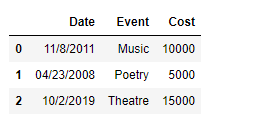








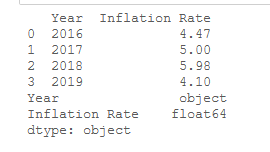




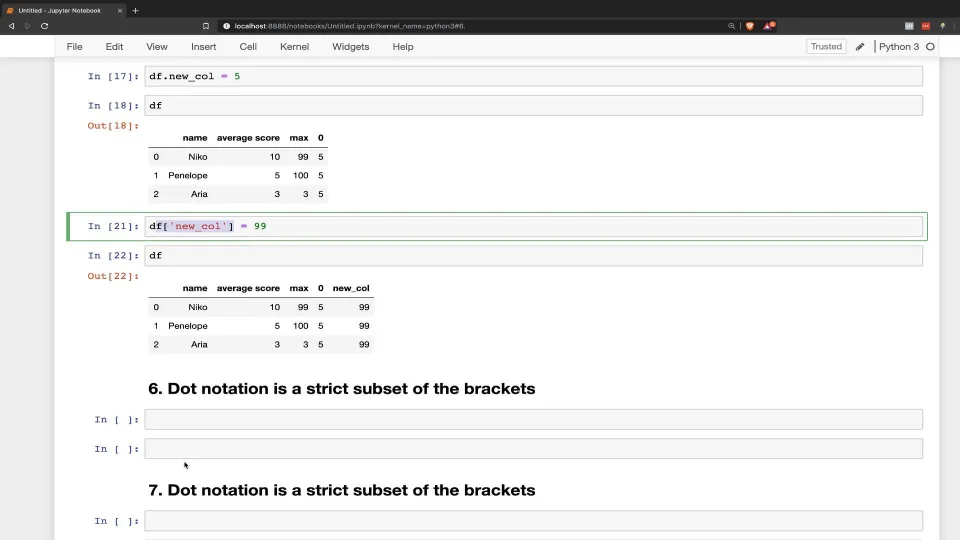















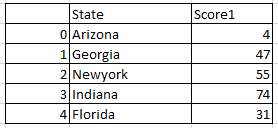


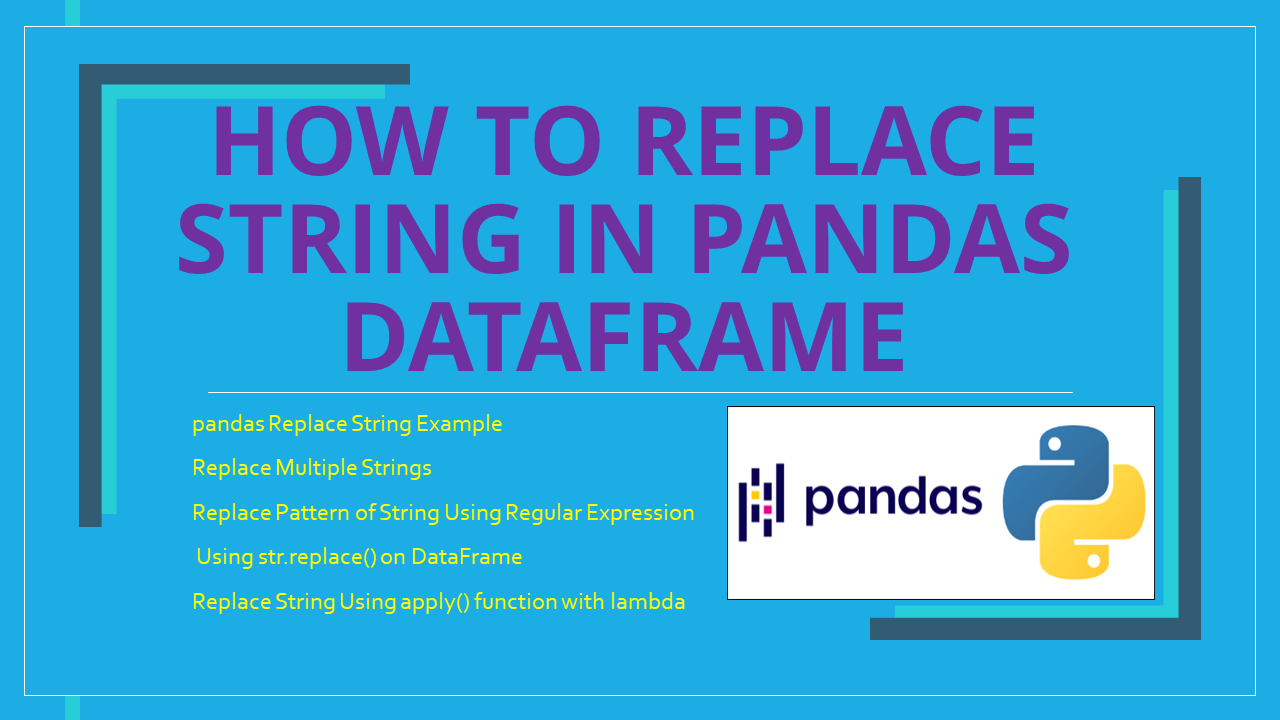



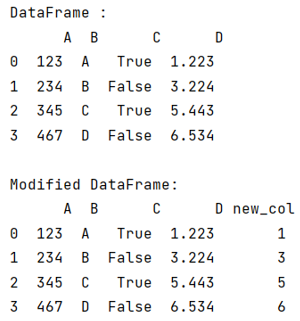



Article link: pandas convert column to string.
Learn more about the topic pandas convert column to string.
- Convert columns to string in Pandas – python – Stack Overflow
- Pandas Convert Column to String Type? – Spark By {Examples}
- How can I convert a column in a Pandas DataFrame to a string …
- Fastest way to Convert Integers to Strings in Pandas DataFrame
- Pandas Change the Column Type to String – Linux Hint
- How to Convert Integers to Strings in Pandas DataFrame – Data to Fish
- Pandas: Convert Column Values to Strings – Datagy
- How can I convert a column in a Pandas DataFrame to a string …
- How to convert Pandas DataFrame columns to string type?
- pandas.DataFrame.to_string — pandas 2.0.3 documentation
- How to convert a column in text/string output in Python
- Convert columns to string in Pandas – W3docs
See more: https://nhanvietluanvan.com/luat-hoc/